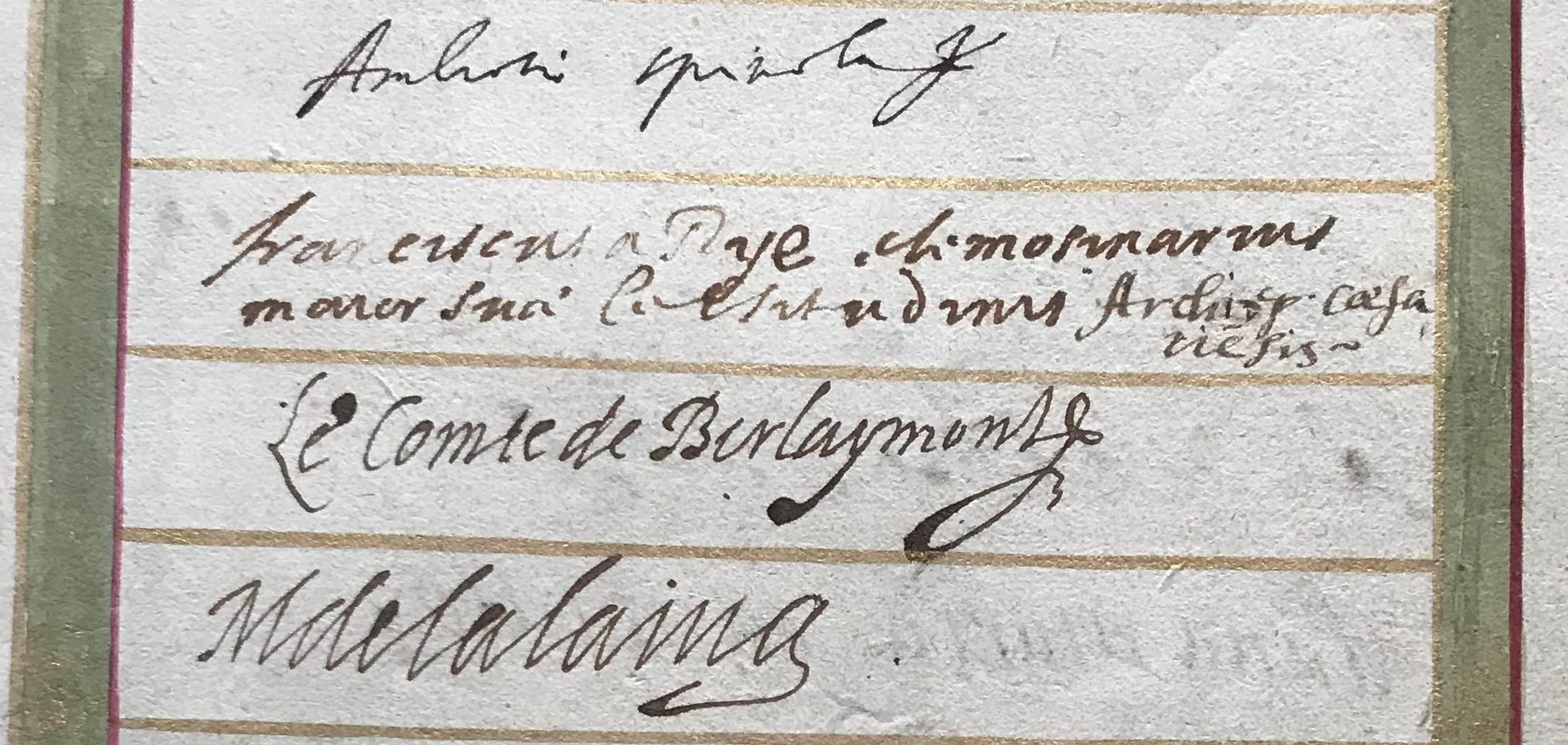The altar of Saint Joseph
This neo-Gothic altar is dedicated to Saint Joseph. It was only in the 13th century that a devotion
developed around the foster father of Christ, under the influence of the Franciscans who
revered his humility During the 17th century, 19 March became the feast day of Saint Joseph. It was
It was the century when King Louis XIV, who became a father for the first time, dedicated France to Saint
Joseph. In 1955, Pope Pius XII associated Saint Joseph with the Labour Day of 1 May. Since then,
he is a saint who is celebrated twice a year.
Saint Joseph was one of the parish’s many living brotherhoods, with members
signing the brotherhood book. We can see a signature by Ambroise Spinola who conquered the cities of
Ostend and Breda against Protestant troops from the north. There are also signatures by the Count of Berlaymont,
the advisor to the regent who called petitioners of the “Noble Compromise”
beggars. There is also a signature probably by Marguerite de Lalaing.
To the left of the altar is a Carrara marble statue from the 18th century showing Saint Joseph
holding the infant Jesus by the hand. The sculptor is not identified but the work is
remarkable in its quality.
